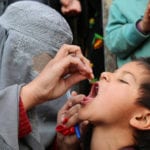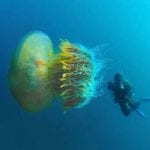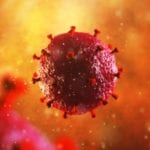 Weird Stuff
Weird Stuff  Weird Stuff
Weird Stuff  Movies and TV
Movies and TV 10 Actors Who Almost Didn’t Take Career-Defining Roles
 Technology
Technology 10 Little-Known Shifts in Computer Science
 Religion
Religion 10 Catholic Histories That Reveal Acceptance of Abortion and Contraception
 Politics
Politics 10 Lesser-Known “First and Only” Facts about U.S. Presidents
 Miscellaneous
Miscellaneous 10 Things You May Not Know about the Fourth of July
 History
History 10 Shocking and Gruesome Founding Father Facts They Don’t Teach in School
 Crime
Crime The Ten Most Vicious Los Angeles Killers
 Miscellaneous
Miscellaneous 10 Indispensable Corporations the World Cannot Afford to Lose
 Animals
Animals 10 Unusual Wolves That Made The News
 Weird Stuff
Weird Stuff Ten Unexpected Discoveries Involving Vomit
 Movies and TV
Movies and TV 10 Actors Who Almost Didn’t Take Career-Defining Roles
 Technology
Technology 10 Little-Known Shifts in Computer Science
Who's Behind Listverse?

Jamie Frater
Head Editor
Jamie founded Listverse due to an insatiable desire to share fascinating, obscure, and bizarre facts. He has been a guest speaker on numerous national radio and television stations and is a five time published author.
More About Us Religion
Religion 10 Catholic Histories That Reveal Acceptance of Abortion and Contraception
 Politics
Politics 10 Lesser-Known “First and Only” Facts about U.S. Presidents
 Miscellaneous
Miscellaneous 10 Things You May Not Know about the Fourth of July
 History
History 10 Shocking and Gruesome Founding Father Facts They Don’t Teach in School
 Crime
Crime The Ten Most Vicious Los Angeles Killers
 Miscellaneous
Miscellaneous 10 Indispensable Corporations the World Cannot Afford to Lose
 Animals
Animals 10 Unusual Wolves That Made The News
Top 10 Dangerous Diseases Lurking At The Beach
Although a vacation or holiday at the beach is supposed to be filled with fun, it can also be a magnet for diseases if you’re not careful. Most people want to stick their feet in the sand or swim in the ocean, but sometimes, that comes at a price.
Some dangerous bacteria hang out at the beach. If you’re not cautious, you may have to cut your trip short with a visit to a doctor. Here are 10 nasty diseases lurking at your favorite beaches.
10 Horrifying Diseases You Definitely Don’t Want To Catch
10 Hepatitis
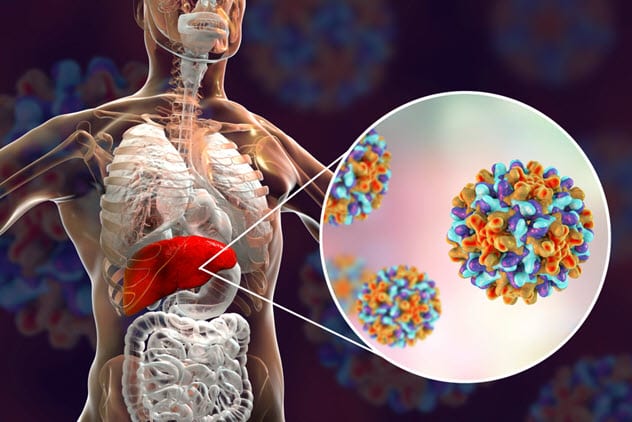
Viral hepatitis inflames the liver and usually comes in the form of A, B, or C strains. Cirrhosis of the liver can occur in severe cases, and some patients may ultimately end up with cancer. The strains are most commonly transmitted through fecal matter or blood, but medical waste that is handled in an improper manner may expose surfers and swimmers to hepatitis.[1]
According to the World Health Organization, hepatitis A is rarely linked to recreational water, but the possibility is still there. In 2006, a study conducted by San Diego State University found that 79 percent of tested water samples contained hepatitis A. Sewage runoff in the San Diego area causes pollution, and vaccination programs are now available for surfers in the region.
9 Legionnaires’ Disease
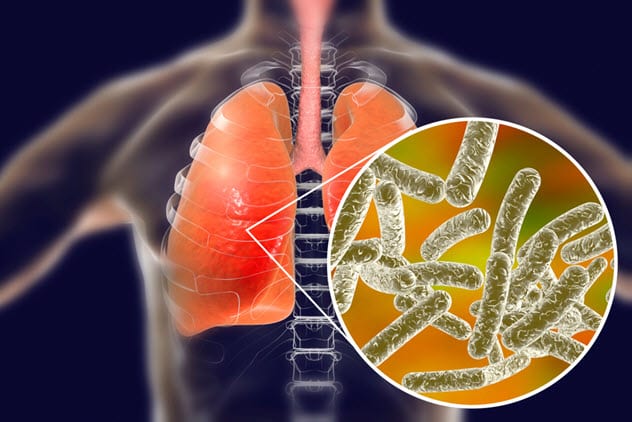 Legionella bacteria can be found in hot tubs because it grows best in warm water between 35 degrees Celsius (95 °F) and 46 degrees Celsius (115 °F). At the beach, the best place to contract Legionnaires’ disease is in a public shower. In 2007, seven of 36 beach showers across Southern Italy tested positive for the most common strain of the bacteria.
Legionella bacteria can be found in hot tubs because it grows best in warm water between 35 degrees Celsius (95 °F) and 46 degrees Celsius (115 °F). At the beach, the best place to contract Legionnaires’ disease is in a public shower. In 2007, seven of 36 beach showers across Southern Italy tested positive for the most common strain of the bacteria.
In 2005, a study found 32 strains of Legionella in New England’s seawater. Although the bacteria were not infectious, this research shows that Legionella finds warm seawater to be a good living environment.
Legionnaires’ disease is like pneumonia and causes coughing, fever, and muscle aches that may last for up to two weeks. Although most infected patients see their symptoms disappear after a round of antibiotics, approximately 15 percent of cases are fatal.[2]
8 Stomach Bugs
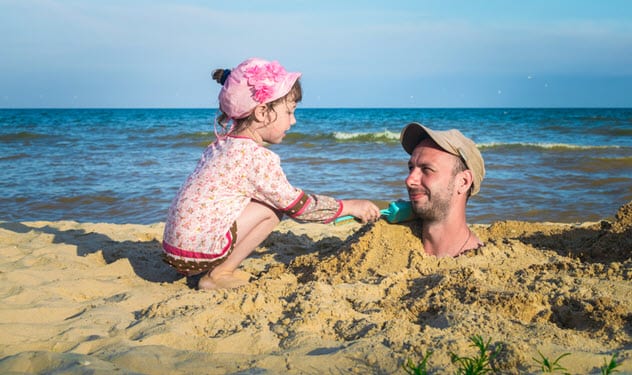
We’ve all experienced stomach bugs at some time in our lives. But did you know that the beach is a good place to find pathogens that lead to stomach bugs?
Poop is the main cause of this type of sickness at the beach. Fecal contamination and microbes have been found in samples of sand from beaches. They probably come from nearby sewage treatment plants or heavy storms that have carried human and animal waste from the source.
These stomach bugs can cause nausea and cramping, which may even lead to gastroenteritis. Digging in the sand while at the beach has been found to raise the risk of diarrhea.
Beach visitors will likely come down with familiar pathogens such as E. coli, Salmonella, or norovirus, which is the most common stomach flu found in America.[3]
7 Cercarial Dermatitis
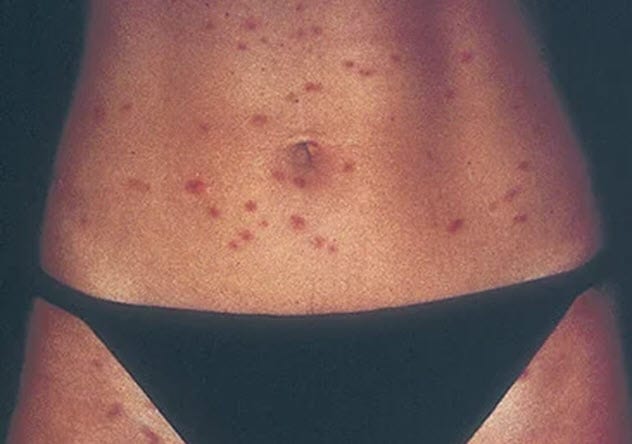
Cercarial dermatitis is more commonly known as swimmer’s itch. Exposure to trematode parasite larvae can cause a patchy skin rash on the infected area. You will normally notice the rash within 48 hours of exposure, and it may stick around for up to seven days.
The parasites usually infect snails and then work their way to birds, but humans are occasionally infected in the process. The rash can usually be treated with an antihistamine. Corticosteroid cream may also provide some relief.[4]
6 Flesh-Eating Bacteria
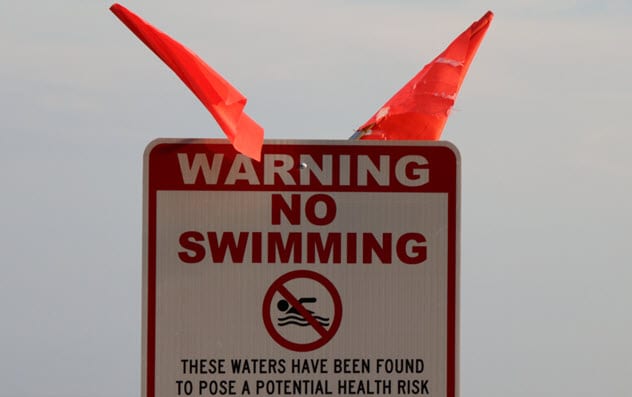
You’ve probably heard about flesh-eating bacteria being found at the beach over the past few years, but the chance of becoming infected is quite low. According to the CDC, the US averages 95 cases of Vibrio vulnificus infection per year that lead to 85 hospitalizations and 35 deaths. Half of those cases come from waters across the Gulf of Mexico.
The bacteria, which can enter a swimmer’s body through open wounds, causes the skin to break down and ulcerate. Raw oysters can also harbor the microbe, which triggers abdominal pains, diarrhea, and nausea for those affected.
Antibiotics typically improve a patient’s chances for recovery, but amputation may be required. The best way to avoid flesh-eating bacteria is to stay away from the water with open wounds and be careful of the shellfish you eat.[5]
10 Diseases That Prevent Other Diseases
5 Hookworms

We love digging our toes into the sand while vacationing at the beach, but that may be a good way to come into contact with hookworms. This parasite can be acquired by walking barefoot on ground that has been contaminated with human feces or by ingesting hookworm eggs.
The eggs spread anywhere that water moves the soil, making the beach the perfect location to find them. These eggs eventually grow into small larvae and try to latch onto animal skin.
If you have hookworms, possible symptoms include an itchy rash, abdominal pain, nausea, weight loss, and diarrhea. Hookworms can easily be prevented by wearing sandals on the beach, sitting on towels when on the ground, and keeping your body washed with soap and water after touching soil and sand.
If you encounter the parasite, pills such as albendazole or mebendazole should clear up the problem.[6]
4 MRSA
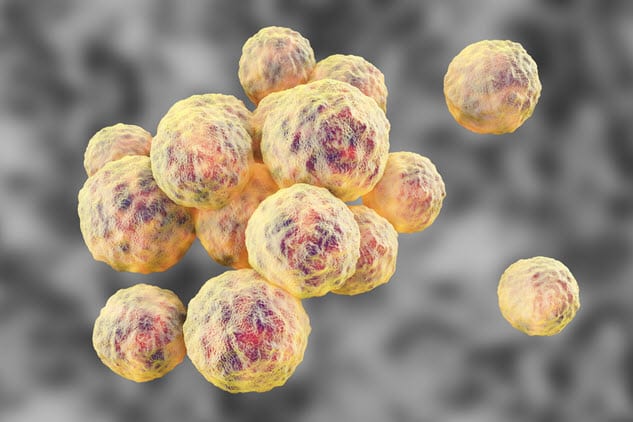
The warm waters and high human traffic make beaches a breeding ground for methicillin-resistant Staphylococcus aureus, better known as MRSA. A staph infection begins as a tiny bump resembling a pimple, but it can transform into a large abscess.
At this point, it grows deep into the body and is a risk to bones and organs. In severe cases, it can turn into pneumonia or other forms of respiratory distress. Minor skin infections are usually treated with antibiotic ointments, but more severe cases require surgery.
Swimmers in subtropical ocean waters have about a 37 percent chance of coming in contact with a form of staph. In 2012, a survey showed that 1.6 percent of their seawater samples and 2.7 percent of their sand samples contained MRSA. Staph consumes salt as a key nutrient, which is why it survives in marine water longer than freshwater beaches.[7]
3 Brain-Eating Amoeba
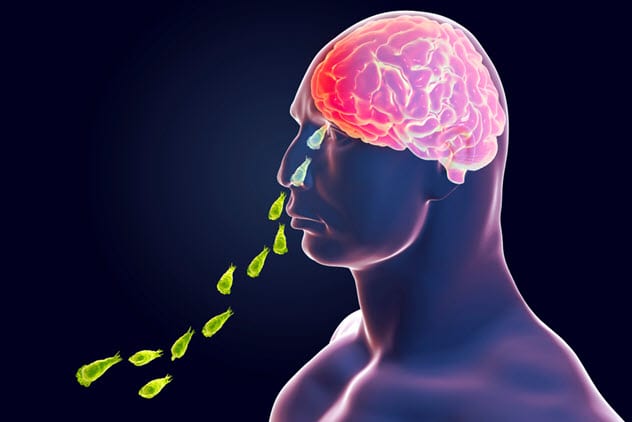 Naegleria fowleri is a brain-eating amoeba that is exceedingly rare and only puts freshwater beachgoers at risk. It frequents the warm waters and soils of freshwater lakes and ponds, which means that swimmers in marine water will not have to worry about the infection.
Naegleria fowleri is a brain-eating amoeba that is exceedingly rare and only puts freshwater beachgoers at risk. It frequents the warm waters and soils of freshwater lakes and ponds, which means that swimmers in marine water will not have to worry about the infection.
N. fowleri enters a swimmer’s body through the nose and works its way to the brain. Although it thrives off bacteria, it will consume whatever is in front of it while in the brain.
Symptoms include fever, headache, and vomiting. The usually fatal infection becomes more violent over time by causing seizures and hallucinations before putting the person into a coma.
The CDC confirmed that only 34 cases between 2009 and 2018 were linked to recreational waters. They even believe that it is okay to consume water that contains N. fowleri because the acids in the stomach kill the microbe immediately.[8]
2 Bloomin’ Algae
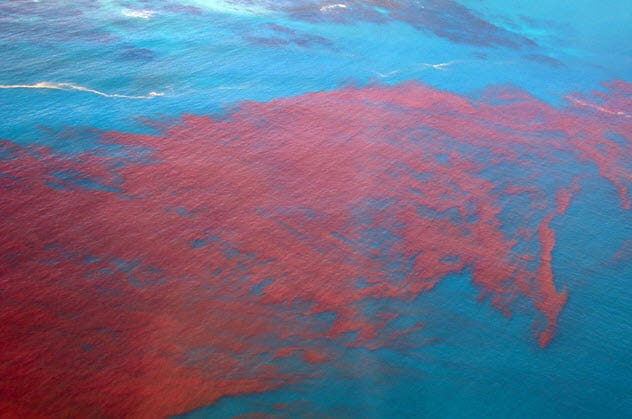
Most algae living in the ocean are harmless, but some produce insanely nasty toxins. Runoff can carry nitrogen and phosphorus into waterways which triggers population explosions known as blooms.
These harmful algal blooms contaminate drinking water. Swimmers can also inhale the toxins through water vapor, swallow them, or absorb them through the skin. Some of the toxins attack the nervous system, while others damage the liver.
Touching the algae can produce rashes and skin sores. But swimmers who inhale or ingest the contaminated water may experience cramps, diarrhea, nausea, coughing, and ear infections.
Dinoflagellates cause the harmful algal blooms called red tides that are in salt water. The chemicals produced by these algae can disrupt nerve cells and cause trouble with the eyes and throat.[9]
1 Roundworms
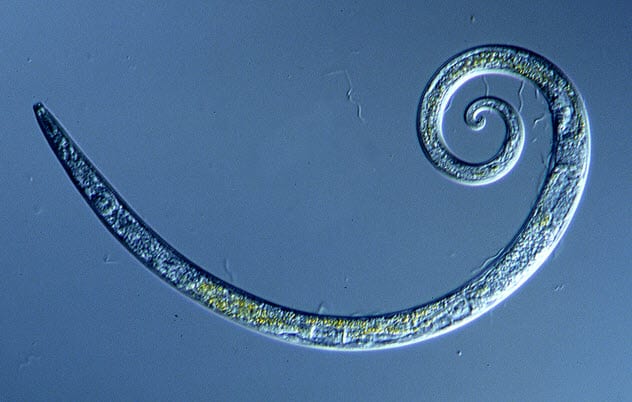
Beachgoers also have to watch out for roundworms. These parasites typically live in your dog’s intestines and feces. Most humans are infected by accidental ingestion, and children are more often affected than adults.
Beachgoers will not know that they are near the parasite, but the right contact with sand could help trigger the infection. Symptoms may include nausea, vomiting, cough, diarrhea, shortness of breath, fever, abdominal pain, and even worms in your feces. Several medications can be prescribed to help treat roundworms, and many treatments work well.[10]
10 Infectious Diseases That Changed History
About The Author: I’m just another bearded guy trying to write my way through life.

